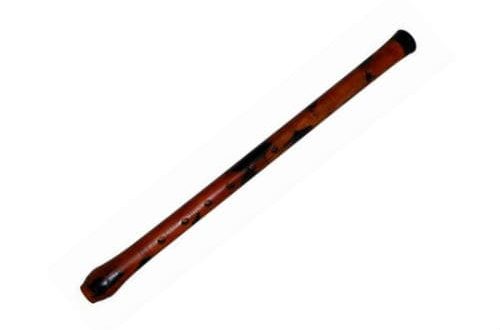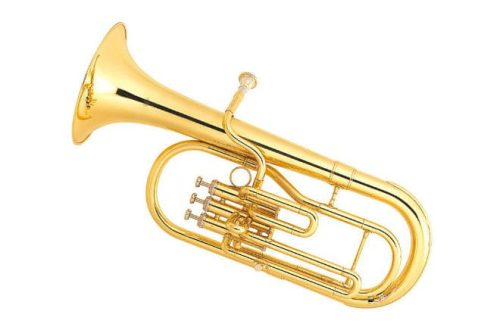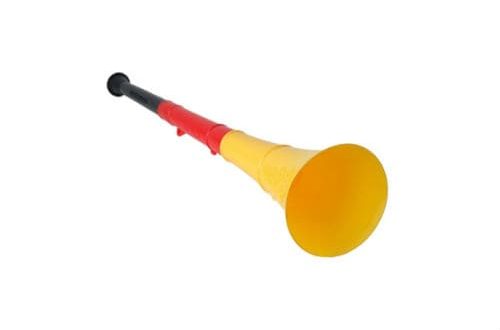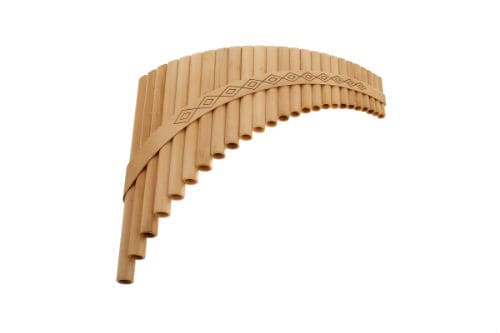
Pan flute: instrument composition, origin story, legend, types, how to play
Contents
Pan flute or pan flute is a musical instrument traditionally made of wood. Modern designs are sometimes made of bamboo, metal, plastic, glass. It consists of fastened tubes of different lengths. The timbre, the pitch of the flute depends on their number. There are panflutes with the number of tubes from 3 to 29.
History of origin
The most ancient form of the flute was the whistle. This home-made simplest musical instrument was used by everyone: both the guys whistling in all sorts of things, and the shepherds giving commands to the dogs. Having fun at their leisure, they composed elementary melodies. Gradually, whistles were improved, modified and to this day remain a popular traditional musical instrument.
Samples of panflutes (2-pipe and more) were found during excavations in Ancient Greece and Ancient Egypt. Found specimens date back to around 5000 BC. Both ancient civilizations dispute the right to be called the discoverers of the flute, but the very name “Pan’s flute” is known from the myths of the ancient Greeks, which have come down to our times along with wonderful music.

Ancient legend
The amazing legend about Pan and the flute tells about the appearance of a musical instrument. This story is hundreds of years old, but after hearing it, no one remains indifferent.
In ancient times, the patron of nature, pastures and shepherds, the god Pan took care of the well-being of the earthly prosperity entrusted to him. Pan was a good host: everything blossomed, fruitful, business was arguing. One problem – God was ugly himself. But the young man was not very worried about this, he had a cheerful, perky disposition. This went on until the young god, for the sake of laughter, was hit with an arrow by the god of love, Eros. On the same day, Pan met a nymph named Syrinx in the forest and lost his head. But the beauty, seeing in front of her a bearded, horned monster with hooves like a goat’s, was frightened and rushed to run. The river blocked her path, and Pan was delighted: he was about to be able to catch up with the fugitive, but instead of a nymph, a bunch of reeds turned out to be in her hands. For a long time, the saddened Pan stood above the water, not understanding where the girl had gone, and then he heard a melody. She sounded the voice of Syrinx. The enamored god understood that the river turned her into a reed, cut off several stems, fastened and made a flute that sounded like the sweet voice of a beloved.
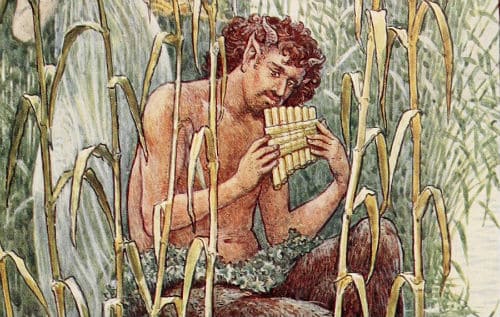
Panflute device
The tool consists of several hollow tubes of different lengths. On the one hand they are closed. Each flute is tuned individually: the length of the tube is adjusted using a plug on the other end. Modern masters use wax for this purpose. There are also plugs made of rubber, cork wood – in such cases, the pitch of the notes can be changed many times. But the Indians of South America did it easier: they closed the holes with corn grains or pebbles.
Like the human voice, panflutes differ in timbre:
- soprano;
- alto;
- tenor;
- contrabass;
- double bass
One of the few shortcomings of the flute is called the limited range of sound. Some flutes play in three octaves, some make 15 sounds. It depends on the number of pipes and the skill of the musician.

Tool types
The Pan flute became a model for the manufacture of other varieties of similar instruments. They differ in the type of tube connection:
Bonded tubes:
- nai – Moldavian and Romanian multi-barreled flute;
- samponya – an instrument of the inhabitants of the Central Andes with 1 or 2 rows of pipes;
- flute – this name is used in Ukraine;
- siku – the flute of the Indians living in South America;
- larchemi, soinari – Western Georgian flute of shepherds.
Panflutes with unbonded tubes:
- kuima chipsan – an instrument of Komi-Permyaks and Komi-Zyryans;
- skuduchay – Lithuanian variety;
- kugikly is a Russian instrument.
The panflute of each nationality has a different length, the number of tubes, the method of fastening, and the material of manufacture.
How to make your own panflute
The composition, which is a set of pipes, is easy to make. The whole process takes place in several stages:
- In October, they collect material – reeds or reeds. They cut it with a knife, protecting their hands with gloves: reed leaves tend to be cut. Right on the shore they clean up dead wood.
- High-quality drying is carried out in natural conditions (not with a hairdryer and not on a battery) for 5-10 days.
- The reed is carefully sawn at the knees.
- There are membrane partitions between the knees – they are removed with a thin knife or nail.
- With an even thin stick of a smaller diameter, the cavity is freed from the pulp.
- The first tube is made the longest. After it, the rest are marked, reducing each by the width of the thumb.
- Next, grind each pipe so that it is even. At this stage, you can already try each for sound: from below, close the hole with your finger, blow from above.
- The pipes are connected. Folk way: each pair is tied separately, and then everything is tied together with a thread, then on the sides with halves of the tubes, split along. You can use cold welding or a hot gun, but this reduces the sound quality.
- The bottom holes are covered with plasticine.
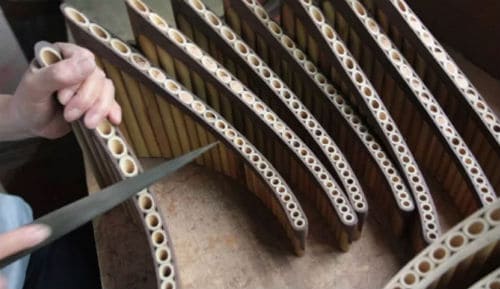
How to learn to play
To master the instrument, you need to understand the specifics of the Play. The panflute combines the properties of a harmonica and an organ. For it to sound, it is necessary that the air stream blown into the open end of the tube begins to vibrate. The pitch of the sound depends on the length of the tube: the shorter the tube, the higher the sound. When playing, they blow with a diaphragm: the tone of the sound depends on the applied force.
Learning to play the Pan flute is a long, laborious task. But for playing at an amateur level, it is enough to apply a simple technique:
- It is necessary to put the body correctly – to stand or sit down with a flat, but relaxed back.
- The long side is taken with the right hand. The instrument is located parallel to the body, bending away from the player.
- The arms are relaxed to move easily to the down tubes.
- The musicians have the word “ear pads” – the position of the lips. Make a slight smile. Slightly part the lips, blow like a bottle. During high notes, the lips are compressed more tightly, and low notes are taken with relaxed lips.
Musicians reveal some secrets, mastering which, you can give the melody a more refined sound. For example, to give a timbre, movements are made with the tongue, as when pronouncing the consonants “d”, “t”.
For the most primitive music-making, they number the pipes, find diagrams specially compiled by experienced flute players, and learn: “Mary Had a Little Lamb”, playing pipes numbered: 3, 2, 1, 2, 3, 3, 3, 2, 2, 2, 3, 5, 5, 3, 2, 1, 2, 3, 3, 3, 3, 2, 2, 3, 2, 1.
Fabulous, light, airy sound evokes memories of something far away. And if the melody is performed by ensembles, bringing national color, then you will think: maybe it’s good that Pan did not catch up with the nymph, because thanks to this we have the opportunity to enjoy beautiful magical music.



